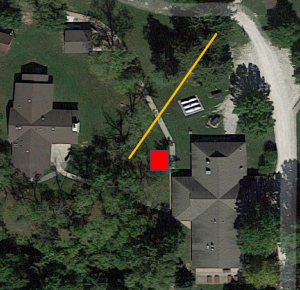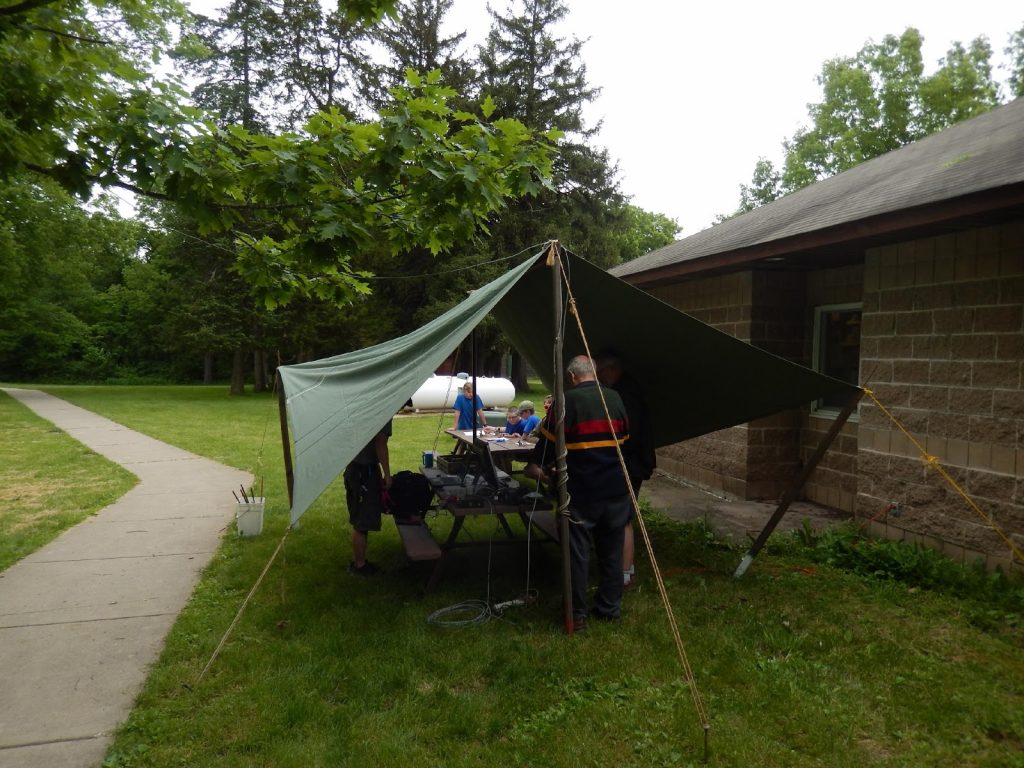If you checked out my QRZ page, you’d know that I’m an Eagle Scout. In fact, I still work at the local Scout camp, Loud Thunder.
At Loud Thunder, I teach a number of badges, including Astronomy, Space Exploration, and Mammal Study.
Though we didn’t have enough time to fit it into the official schedule, I did convince administration to let me squeeze in the Radio merit badge after hours. While I do sacrifice a good chunk of my night off (which my girlfriend is not very happy with), about 63 kids have gotten their radio merit badge, and several have expressed thorough interest in the amateur radio hobby.
I split the badge up into 2 separate parts: the class and the station.
The Class
The curriculum was relatively straight forward. Over the course of the week, we only had 3 hours of classtime. We discussed several topics:
- What radio waves physically are
- Different ways we use radio waves to modulate different kinds of signals
- Basic propagation: how the signals act at HF vs VHF/UHF
- Basic terminology: Q codes, “73”, “CQ”, and other lingo
- Functional mechanics of a transciever (with block diagrams)
- Safety
- What ham radio operators do and (a commonly asked question) why you need a license to do it
It was a lot of material to cover in a short period of time. But the kids (averagely aged between 12 and 16) where very interested. I got a lot of good questions, and several of the kids expressed interest in even getting their first license!
The Station
Both requirement 7 and 9a6 of the Radio merit badge required that the Scout visits a radio station and makes a contact.
This was a little bit tricky; there was a 2m ARES repeater I could key with my handheld (which we often did during class), but how do I get each of them to make individual contacts? Especially when you consider that the class averaged around 15 Scouts in size.
To the rescue came Walter, a knowledgeable ham from my local club (W9XG). Walt, eager to help, pointed out that the club had a few radios and antennas laying around. So over the course of 6 weeks, Walt (along with Richard, Ron, and a few other notable hams from the club) devoted probably close to 36 hours setting up, operating, and taking down a station weekly.
The station consisted of a single Icom IC-706mkIIg (and a computer for use with PSK31 along with standard SSB) connected to a carolina windum antenna pointed E/W.

Red: station
We operated out of a dining fly, which is just a canvas stretched across a couple of poles.

Kids outside of the merit badge were also able to watch, listen, and use the radio if they so chose.
Along with the radio tent, we were running morse code practice with homebrew straight keys.
Not only did we have morse practice and a radio tent, Walter ran a foxhunt, where the Scouts used a tape-measurer yagi, receiver, compass, and map to triangulate a signal. Several groups of kids found the fox.
Conclusion
While I was introduced to radio by a simple walkie talkie as a kid, I hope that some of these kids will eventually go on to earn their license as I have. Ham radio is an incredible hobby with astonishingly smart people. It’s ever-growing, ever-changing, and far from dead.